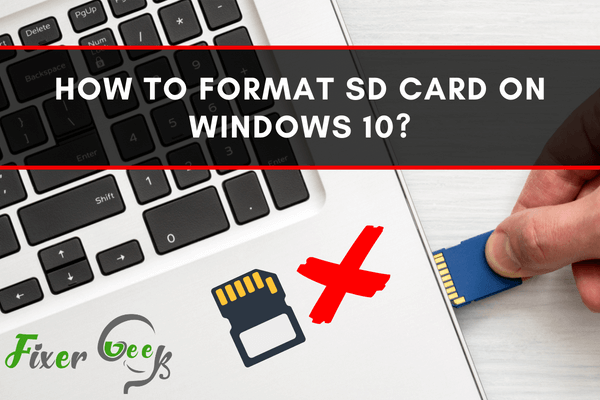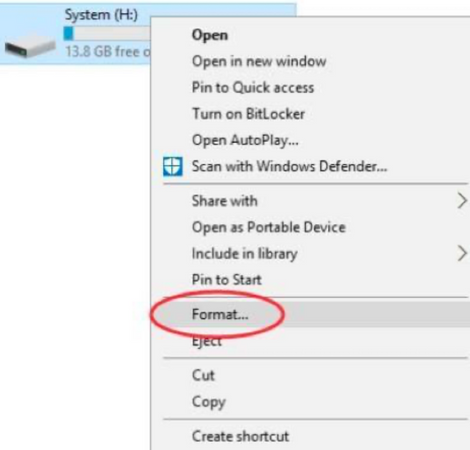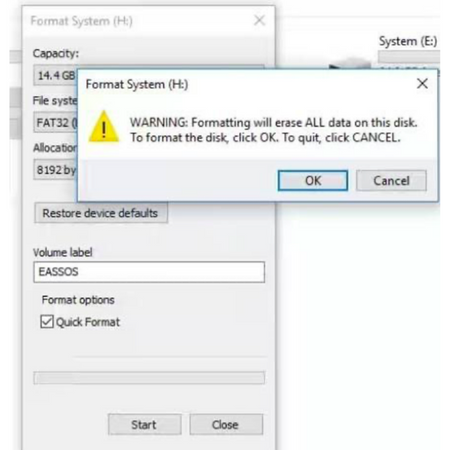There is always a need to format your SD card on Windows 10 because, over time, you might suffer from space or read errors and related device problems. And if you want to add information to your SD card, including photos, music or files, it is better to format the SD card on Windows 10 with the right method in order to avoid data loss. In this post, I will show you ways to format SD card on Windows 10 computer. All methods are working perfectly on my computer other than similar computer models.

SD cards need to be formatted from time to time. Formatting enables the file to change to exFAT, FAT32, and NTFS file systems. The change in file systems diversifies the usage of the SD card, allowing the owner to use it in game consoles, cameras, laptops, and smartphones.
Sometimes, SD cards become faulty. This causes the files stored to become damaged, corrupted, and inaccessible. For the card to be useful again, formatting is needed. Formatting wipes out all the data in the SD card, making it as good as new.
Some people get anxious about this process; however, it is straightforward. Before you begin, remember to do the following:
- Make a backup of your files.
- Connect your laptop to a power source, so it does not suddenly go off. A sudden loss of power may damage your SD card.
- Follow the steps illustrated below.
Method #1: Format Your SD Card With Windows 10
- Connect Your SD Card to your laptop via a reader for cards or insert it in the slot for SD cards.
- Open the tab that says: "My Computer" or the "This PC" icon. If you cannot see the SD Card, 1. perhaps it is inadequately connected to your computer. Remove the SD card and connect it to your computer again.
- Once the SD card is visible, right-click on it. An option will appear that says "format." Click on it.

- When the formatting options appear, click on the option labeled "file systems format." Allocate unit.
- Review your settings, and when you are satisfied, click on "start."

- Windows 10 provides a warning reminder that formatting your SD card erases all present data. Ensure you have all the backup files that you need. Click "OK" to begin the formatting process. Clicking OK closes the window as soon as all the formatting is completed. Windows 10 will inform you when the process is done.
Method #2: Format Your SD Card with Windows Explorer
- Insert the memory card to the laptop or connect it to the laptop via a card reader.
- Open the icon labeled "File Explorer."
To find the File Explorer tab, you can insert a right-click on your home screen tab. Options will be presented. The All Apps tab is present on the upper left of the tab. A right-click will reveal a Windows system; another right-click will reveal the File Explorer tab. - Hold the SD card option for 1 second. Options will appear, including the Format option.
- Click on "Format."
- The Format option will open a screen. Configure each option according to your desired specifications.
The options include Capacity, volume label, file system, allocation unit size, and quick format.
The quick format option is enabled once the checkmark is seen. It wipes the SD card clean. However, it omits the step for scanning for faulty sectors of the card.
Quick formatting may take up to 2 minutes. Other Formatting may take up to 20 minutes for 8 GB SD cards and may take longer for larger SD cards. - Click on the Start button.
- A warning and reminder will pop up. Click the OK option to continue.
- A prompt saying Format Complete will pop up. Press OK.
Final Words
Formatting an SD card on Windows 10 is not complicated. There are several methods for you to choose from as well, so you are sure to find one that works for you.
Summary: Format SD Card on Windows 10
- Connect the SD Card to your PC.
- Press Win+R (Windows logo key and R key) at the same time.
- Input "diskmgmt.msc" in the pop-up command window and press Enter.
- Right-click on the SD card drive and select Format....
- Click OK in the pop-up format window to start formatting the SD card.